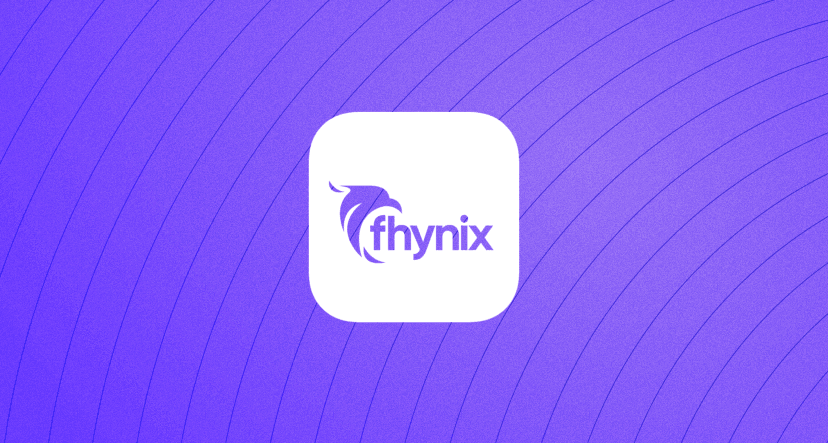India’s Leading Crypto Platform WazirX Reduced TAT by 67% with Appsmith
WaziX is using Appsmith for the speedy delivery of internal tools use cases spanning across internal communications, operations, access control, infrastructure health monitoring, and data views.
- 50+
users
- 67%
less TAT
- Reduced
engineering dependency

Cryptocurrencies are having a moment, and crypto adoption is rapidly growing. In India alone, there are over 100 million crypto investors. Trading platforms are essential for any user to dabble in cryptocurrency. And, there’s a lot behind the scenes to help make these platforms easy to use, stable, and secure enough to handle millions of financial transactions each day. For this, the internal tooling has to be robust and ready for quick iterations, revisions, and deployments.
We got in touch with the Engineering Manager (Frontend), Anvay Kshatriya, at WazirX, a leading cryptocurrency platform, from India, to talk about their internal tooling challenges and how they overcame them with Appsmith.
WazirX was founded in March 2018 by Nischal Shetty, Sameer Mhatre, and Siddharth Menon and has been able to ride the wave of retail traders investing in cryptocurrencies successfully.
Rapid Prototyping Leads to Quick Integration Leads to Better Business Outcomes
The way internal tooling works at WazirX is that the product team at WazirX compiles developers’ requirements. Then they decide whether to build it on the existing internal tool (the website built on React and is connected to the backend through APIs) or on Appsmith. The frontend team members maintain the app, and they follow a continuous development cycle for their internal tools comprising new features and or bug fixes in every two-week sprint. With their current internal tool, Anvay mentions that a significant pain point is the time and effort to build new features.
“The requirement of an internal tool is usually last minute, and there is never enough runway to build it in a planned manner. For example, we usually get many requests from our compliance team, and these are urgent and high-stakes requests, and the turnaround time for such builds has to be less. Thinking about UX, middle layer integrations like APIs, testing, QA, and then thinking about the final user experience takes up a lot of time. We prefer using Appsmith because many of these issues, especially UI, are taken care of. We know what that feature would look like in the end,” says Anvay. He adds that they are currently training backend engineers to directly use Appsmith to build and maintain the necessary tools they need on top of the APIs they are also building and using. Anvay says that this would reduce the dependency on frontend teams to work on internal tooling.
For businesses, time is more precious than anything, especially for an organization like WazirX that addresses a critical platform gap for Indian adopters. It’s vital that the backend tooling scales along with the organization. Low code development platforms can help with fast, reliable, and most importantly, secure plug-and-play customization that can address the needs within an organization effortlessly and without the unnecessary stress of an infrastructural overhaul.
Anvay mentions that when they started building WazirX, there were not enough low code tools to handle internal operations. “We had to build a tool from scratch. We considered Appsmith for the following reasons: 1) Speed and effort 2) Cost 3) Feature availability 4) Role-based authentication 5) Support for the tool,” shares Anvay.
To summarize, WazirX needed to increase the speed they could build an application and reduce the effort required to make them. They also wanted features where they could add custom code. And of course, for any internal tool to have a long and productive life, it needs to be maintained regularly, and good support is critical.
Appsmith is helping businesses like WazirX accelerate digital transformation and positively impact overall business outcomes and goals.
Why WazirX Uses Appsmith
In WazirX’s context, their internal tooling requirements span across communications, operations, access control, infrastructure health monitoring, and data views.
Communications: The marketing team at WazirX uses Appsmith to send in-app product-level messages and notifications to users.

Operations: The support team uses this to view data and take specific actions while handling customer support queries.
Access Control: Access for various critical internal systems is controlled by a board in Appsmith, used by only a set of super users.

Infrastructure Health Monitoring: In the WazirX workflows, very few people have direct access to the infrastructure on production. However, those without access to this infrastructure can now view the status of the various pods in WazirX through a board on Appsmith.
Data Views: Various teams have access to view their requirement-specific data from the system on Appsmith dashboards.
Before building these features on Appsmith, the engineering team would build them on their custom internal tool. Anvay explains further, “We have a tool that is built in-house, and we continue to add support and add complex and highly customized features. We have two separate instances of Appsmith running in addition to this tool. One of the instances is connected to the production infrastructure and database. It’s an application that only a few people have access to. Another instance is connected to the system via APIs and contains multiple function boards needed by various internal teams. We have a custom authentication system for all APIs that is accessed through Appsmith.”
It Does Not End Here
The internal apps at WazirX built using Appsmith have been adopted by over 50+ people. The buck does not stop here for WazirX’s internal tooling strategy. One of the key challenges with their existing in-house internal tool is the high turnaround time to implementing new features. With Appsmith, they reduced TAT by over 67 %.
Anvay mentions that their next steps are to reduce dependency on existing legacy internal tools and move them or build them on Appsmith as soon as features like app versioning, customizability, and composability are shipped.
Adopting Appsmith can enable businesses to build more agile teams, launch critical internal applications and successfully scale their business according to evolving requirements while staying five steps ahead of the market trends instead of playing catch up.
Take Appsmith out for a spin
Talk to our team about your custom requirements or request a demo.


